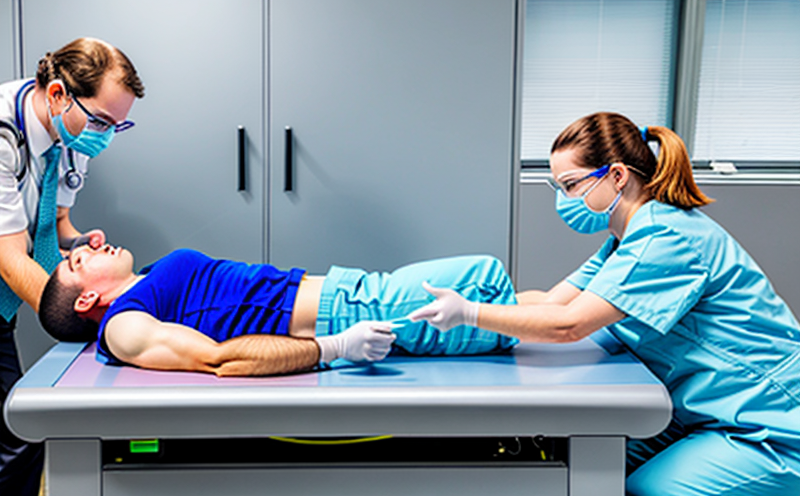Evaluating the performance of medical devices after simulated drops
Evaluating the Performance of Medical Devices after Simulated Drops A Crucial Service for Medical Device Manufacturers and Distributors
The medical device industry is a rapidly growing market, with an increasing demand for innovative products that cater to various healthcare needs. With the constant evolution of medical technology, manufacturers are under pressure to design and produce devices that not only meet but exceed regulatory requirements and industry standards. However, one critical aspect that often takes a backseat in product development is the evaluation of a devices performance after simulated drops.
At Eurolab, our team understands the importance of this often-overlooked service, which we offer as part of our comprehensive laboratory services. In this article, we will delve into the significance of evaluating medical devices after simulated drops and highlight the numerous benefits that this service offers to manufacturers and distributors in the industry.
What is Evaluating the Performance of Medical Devices after Simulated Drops?
Evaluating the performance of medical devices after simulated drops involves subjecting a device to controlled falls or impacts to assess its durability, reliability, and functionality. This process helps determine whether the device can withstand the rigors of real-world use, particularly in environments with high-risk drop zones such as hospitals, clinics, or home care settings.
Our laboratory at Eurolab employs cutting-edge equipment and expert technicians to simulate various types of drops, including vertical falls, horizontal impacts, and angled collisions. We also utilize advanced testing methods to evaluate the devices performance under different environmental conditions, such as temperature fluctuations and humidity levels.
Why is Evaluating the Performance of Medical Devices after Simulated Drops Essential?
In todays highly competitive medical device market, manufacturers must demonstrate that their products can withstand the demands of real-world use. Failure to do so can result in costly recalls, damage to brand reputation, and decreased customer trust. By evaluating a devices performance after simulated drops, manufacturers can
Ensure Compliance with Regulatory Requirements Many regulatory agencies, including the FDA and CE Marking authorities, require medical devices to undergo drop testing as part of their approval process.
Reduce the Risk of Device Failure Identifying potential design flaws or manufacturing defects early on can help prevent costly recalls and device failures in the field.
Improve Product Reliability and Durability By testing a devices performance under simulated drop conditions, manufacturers can optimize product design and improve overall reliability and durability.
Enhance Customer Confidence Demonstrating a commitment to safety and quality by conducting rigorous testing can increase customer trust and loyalty.
Key Benefits of Evaluating the Performance of Medical Devices after Simulated Drops
At Eurolab, we offer an extensive range of laboratory services, including
Drop Testing Our team simulates various types of drops to evaluate a devices performance under controlled conditions.
Environmental Testing We subject devices to temperature fluctuations, humidity levels, and other environmental factors to assess their reliability.
Vibration Testing Our experts simulate real-world vibrations to determine a devices durability in harsh environments.
Material Analysis We analyze the physical properties of materials used in medical device construction to identify potential weaknesses.
QA Frequently Asked Questions about Evaluating Medical Devices after Simulated Drops
What types of devices can be tested?
Our laboratory services are available for a wide range of medical devices, including diagnostic equipment, surgical instruments, patient monitoring systems, and more.
How do you simulate drops?
We utilize advanced equipment to replicate various drop scenarios, including vertical falls, horizontal impacts, and angled collisions.
What is the purpose of environmental testing?
Environmental testing helps assess a devices performance under real-world conditions, including temperature fluctuations, humidity levels, and other environmental factors.
Can you test devices for specific industries or applications?
Yes, our team can tailor our services to meet the unique needs of your business, whether youre developing products for hospital use, home care settings, or industrial environments.
Conclusion
In conclusion, evaluating the performance of medical devices after simulated drops is a critical service that offers numerous benefits to manufacturers and distributors in the industry. By partnering with Eurolab, you can ensure compliance with regulatory requirements, reduce the risk of device failure, improve product reliability and durability, and enhance customer confidence.
At Eurolab, we are committed to providing high-quality laboratory services that meet the evolving needs of the medical device industry. Contact us today to learn more about our Evaluating the performance of medical devices after simulated drops service and discover how our expertise can help you bring safer, more reliable products to market.




